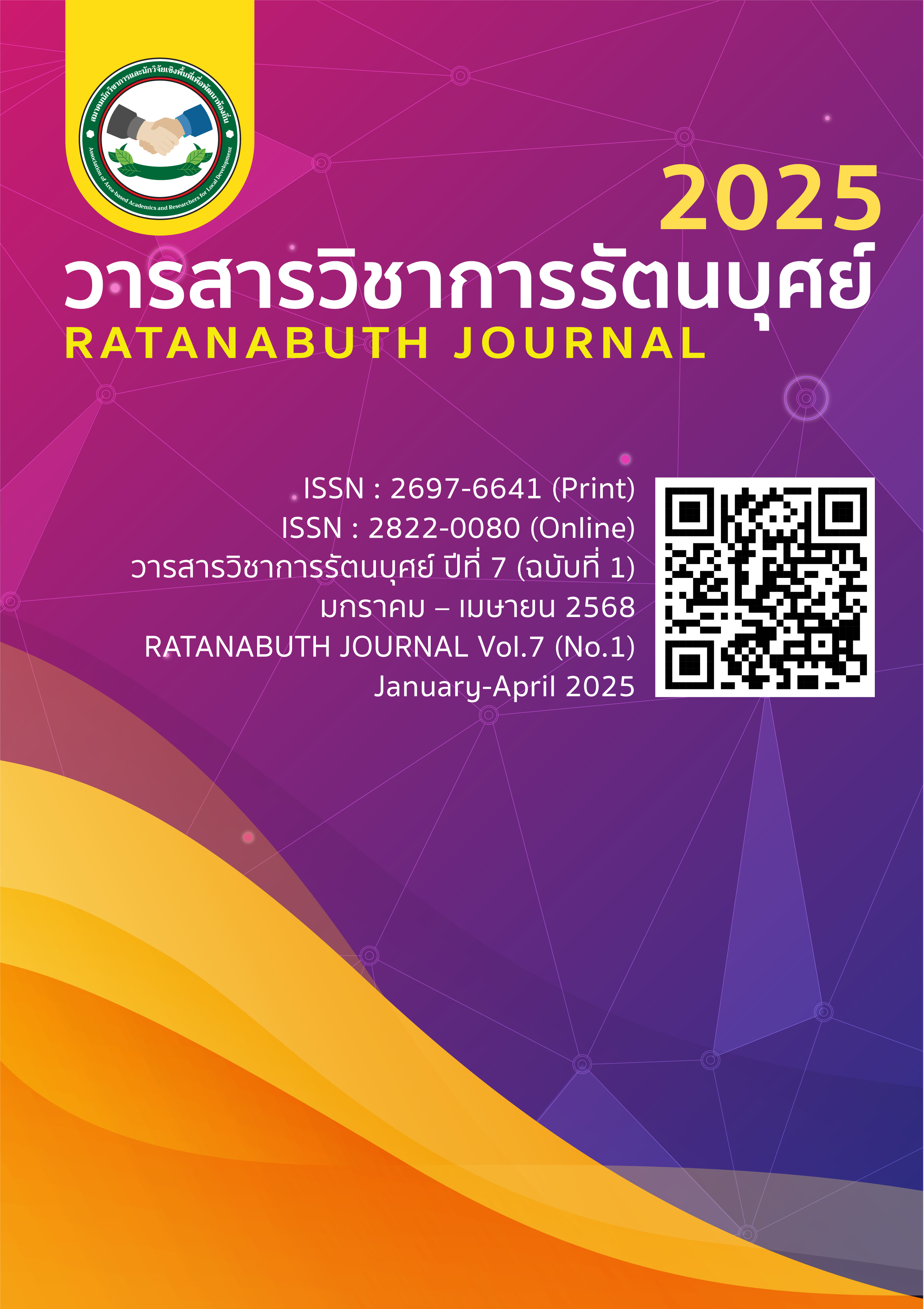Human capital development model for personnel in the Air Defense and Coastal Defense Command, Royal Thai Navy Human capital development model for personnel in the Air Defense and Coastal Defense Command, Royal Thai Navy
Main Article Content
Abstract
Human capital development is an important factor in enhancing the potential and efficiency of an organization, especially the Air Defense and Coastal Defense Command, Royal Thai Navy, which has an important mission in national defense. It requires personnel with knowledge, skills, and abilities that are appropriate for rapidly changing situations. This research aims to 1) study the level of human capital development of personnel in the Air Defense and Coastal Defense Command, Royal Thai Navy; 2) study the factors affecting the development of human capital of personnel in the Air Defense and Coastal Defense Command, Royal Thai Navy; and 3) To create and confirm the human capital development model of personnel in the Air Defense and Coastal Defense Command, the Royal Thai Navy used quantitative and qualitative research methods. The research sample consisted of 344 personnel in the Air Defense and Coastal Defense Command, obtained by defining the sample group according to Taro Yamane's formula and using the proportional determination method and simple random sampling method. The data collection tool was a 5-level rating scale questionnaire. The data were analyzed using descriptive statistics, mean, percentage, standard deviation, and structural equation analysis (SEM). Creating and confirming the human capital development model of personnel in the Air Defense and Coastal Defense Command, the target group of qualified persons consisted of 12 executives, qualified persons, and personnel in the Royal Thai Navy. The research tools used were interview forms and appropriateness assessment forms.
The research results found that 1) The level of human capital development of personnel in the Air Defense and Coastal Defense Command, Royal Thai Navy, was at a high level overall ( = 3.55, S.D. = 0.92) (2) Factors affecting the development of human capital of personnel in the Air Defense and Coastal Defense Command, Royal Thai Navy, by ranking the overall influence coefficient from highest to lowest, namely, leadership factors, management factors, and supportive factors, can jointly explain the development of human capital of personnel in the Air Defense and Coastal Defense Command, Royal Thai Navy, by 92.40 percent (R2 = 0.924) with statistical significance at the .05 level, which the model is consistent with the empirical data P-Value = 0.01, / = 1.68, CFI = 0.99, TLI = 0.99, RMSEA = 0.04, SRMR = 0.01 and 3) The model of human capital development of personnel in the Air Defense and Coastal Defense Command, Royal Thai Navy, consists of (3.1) Administrative factors (3.2) Leadership factors (3.3) Support factors. 4) The results of the confirmation of the model are most appropriate, and experts have consistent opinions, with a median between 4.00-5.00 and an interquartile range of less than 1.5.
Article Details

This work is licensed under a Creative Commons Attribution-NonCommercial-NoDerivatives 4.0 International License.
References
กองทัพเรือ. (2560). ยุทธศาสตร์กองทัพเรือ พ.ศ. 2560 – 2579. ชลบุรี: กองทัพเรือ.
ชัยกฤต ชรารัตน์. (2558). ปัจจัยที่มีผลต่อการพัฒนาทรัพยากรมนุษย์กองร้อยบิน กองพลที่ 1 รักษาพระองค์. วารสารมหาวิทยาลัยนครพนม, 5(2), 118-119.
ฐิติทัตน์ นิพนธ์พิทยา. (2562). รูปแบบการพัฒนาทรัพยากรมนุษย์ในยุคไทยแลนด์ 4.0 ของหน่วยบัญชาการทหารพัฒนา. วารสารพุทธสังคมวิทยาปริทรรศน์, 7(2), 175-176.
บุญชม ศรีสะอาด. (2558). การวิจัยเบื้องต้น (พิมพ์ครั้งที่ 9). กรุงเทพฯ: สุริยาสาส์น.
ประไพทิพย์ ลือพงษ์. (2556). การพัฒนาทุนมนุษย์ใหม่สมรรถนะความสามารถในการแข่งขัน.วารสารนักบริหาร, 32(4), 103-109.
รังสรรค์ สิงหเลิศ. (2551). ระเบียบวิธีวิจัยทางสังคมศาสตร์. มหาสารคาม: มหาวิทยาลัยราชภัฏมหาสารคาม.
หน่วยบัญชาการต่อสู้อากาศยานและรักษาฝั่ง กองทัพเรือ. (2565). รายงานผลการดำเนินงานของหน่วยบัญชาการต่อสู้อากาศยานและรักษาฝั่ง กองทัพเรือ ประจำปี 2565. ชลบุรี: กองทัพเรือ.
Armstrong, M. (2014). Armstrong's handbook of human resource management practice (13th ed.). London: Kogan Page.
Becker, G. S. (1993). Human capital: A theoretical and empirical analysis, with special reference to education (3rd ed.). Chicago: University of Chicago Press.
Chen, X. (2021). Leadership support and its impact on human capital development in military organizations. Journal of Leadership & Organizational Studies, 28(2), 211–225.
Conley, R. E., Mulcahy, P., Oliver, G., & Wallace, S. (2024). Human capital management in the United States Space Force: Strategic integration for mission readiness. RAND Corporation.
Miller, J., Thompson, R., & Brown, C. (2023). Leadership development and human capital enhancement in military organizations. Defense Leadership Review, 19(2), 184–198.
NATO. (2022). Allied Command Transformation continues rapid human capital development. NATO. Retrieved from https://nato.int
Norton, D. P., & Kaplan, R. S. (2000). The strategy-focused organization: How balanced scorecard companies thrive in the new business environment. Harvard Business Press.
Oxford Academic. (2020). The case for increasing human capital investment in military personnel. Oxford Academic Journal of Defense and Economics.
Park, J. (2004). Human capital and economic growth in Japan. Tokyo University Press.
Yamane, T. (1973). Statistics: An introductory analysis (3rd ed.). New York: Harper and Row Publication

